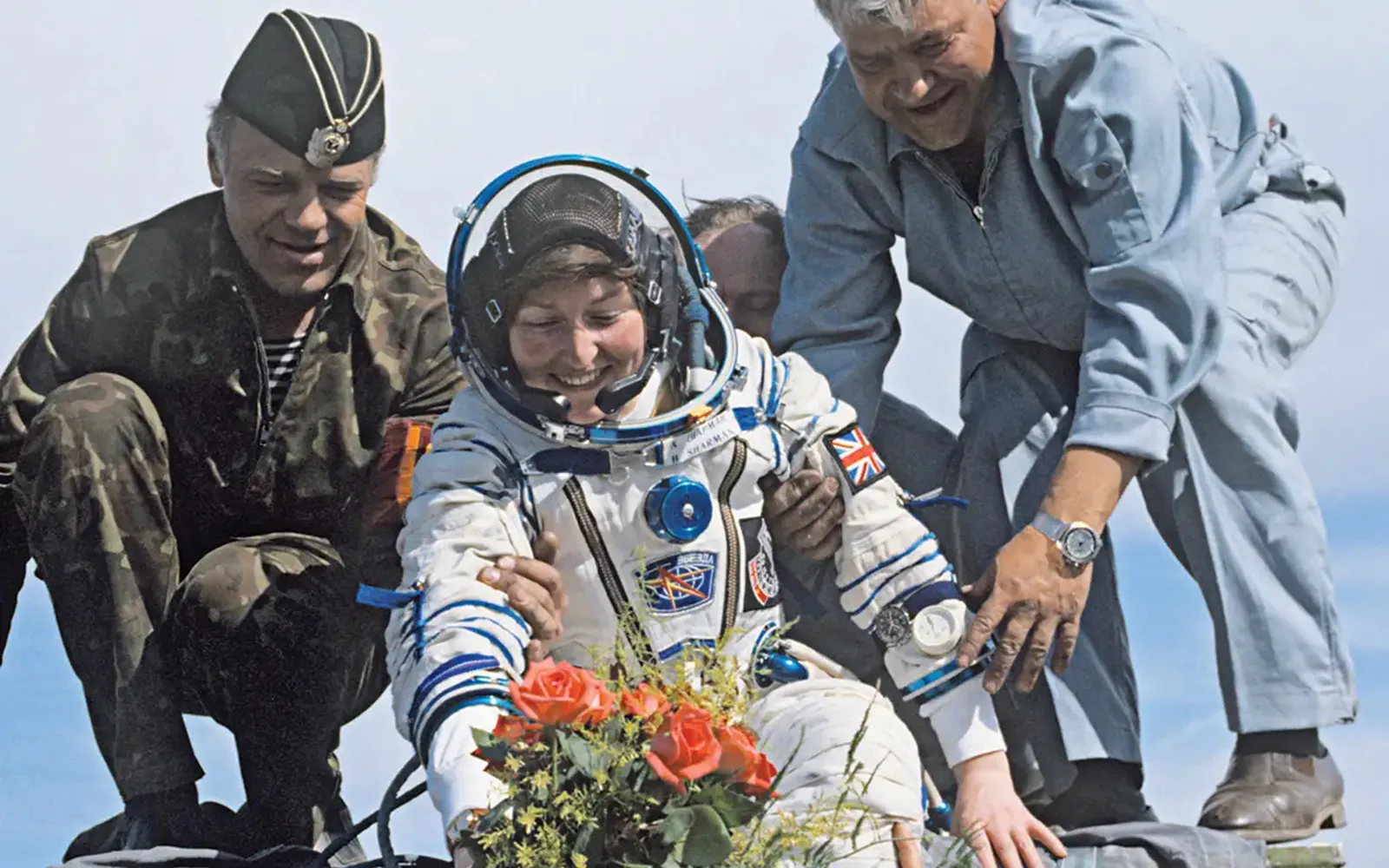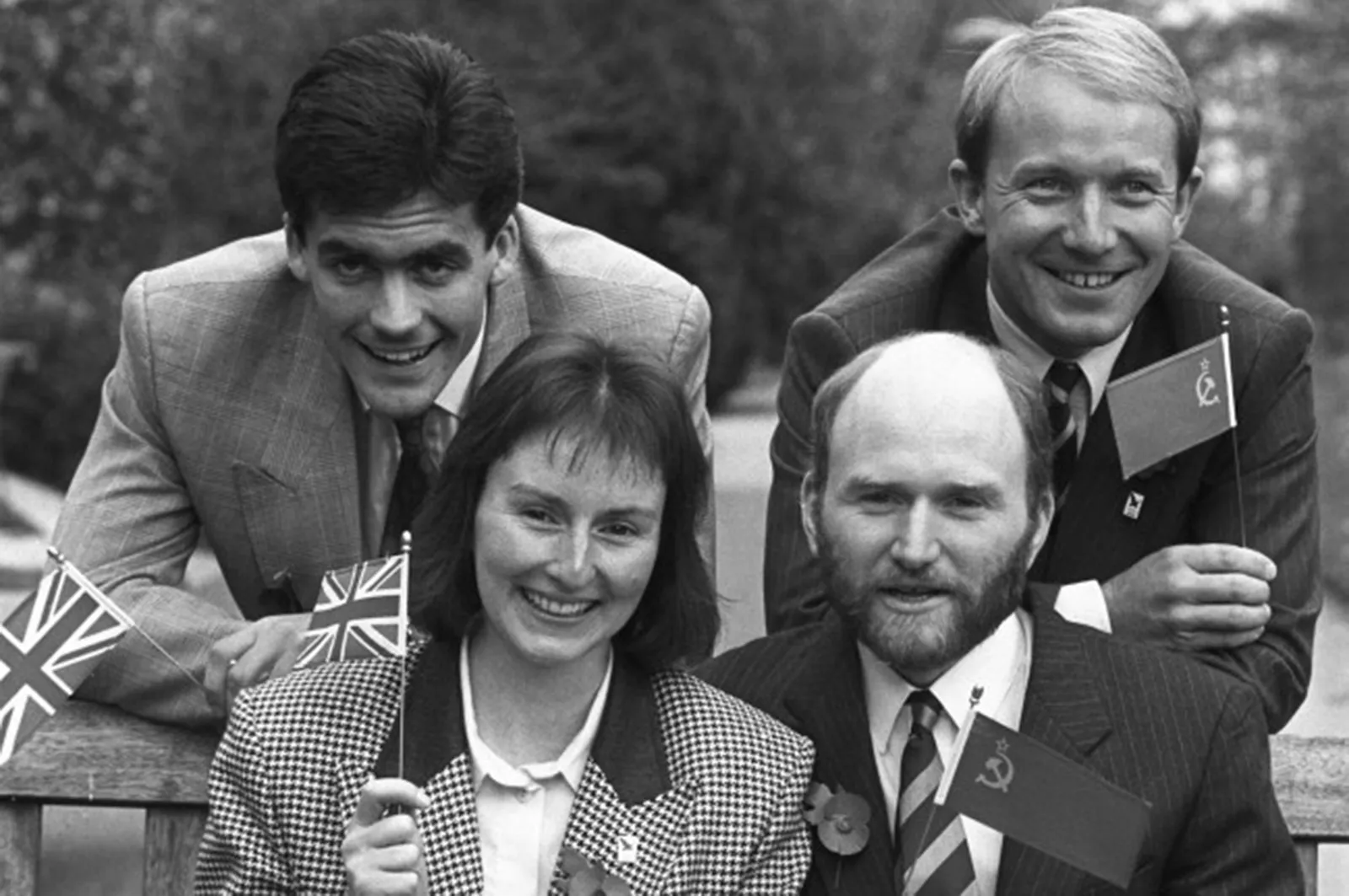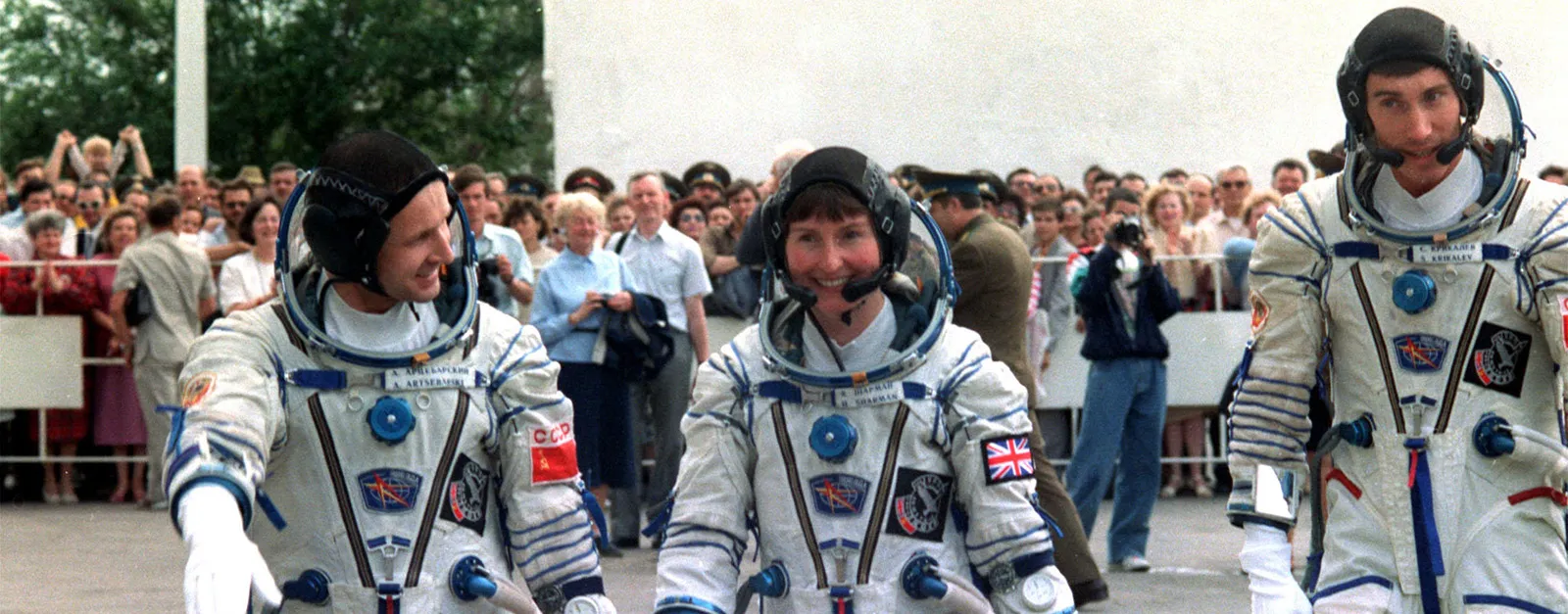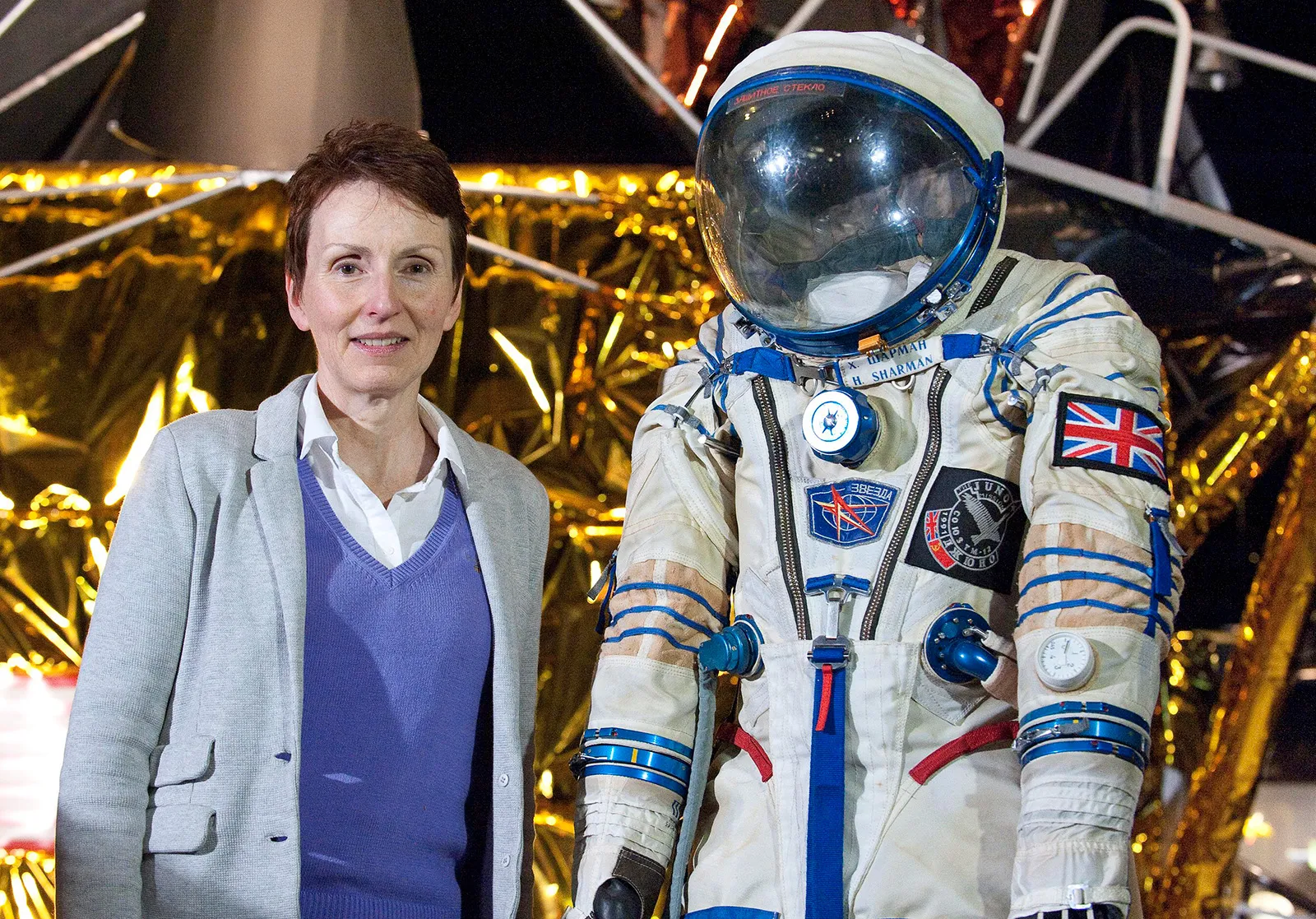Helen Sharman: The True Superhero of Space Cooperation
In the annals of human spaceflight there are few entries more unusual than that of Helen Sharman. She was the first Briton in space, but traveling as a Soviet cosmonaut, and her journey from Sheffield to the Mir space station - via Moscow - was riddled with complications, drama and unlikely interventions. She even came close to pulling the plug on the mission herself when it seemed that she’d be unable to perform scientific experiments in space. On her eventual return, she has continued to demonstrate this unflinching commitment to science and now stands as not just an unlikely pioneer, but a hugely effective advocate for STEM education and an inspiration to aspiring astronauts of the future.

No experience necessary
Helen was born in 1963 in Sheffield, England, into an ordinary provincial family; her father was a college lecturer and her mother a nurse, and Helen grew up sharing a bedroom with her older sister Andrea while attending the local public school. At first, there was little about the diminutive Helen that suggested she would become a historic Briton, with her mother later saying of her that “she was an ordinary girl who has gone on to do an extraordinary thing”, but while she was quiet, well-behaved, and studious, there were small signs of a thirst for adventure in her early years, such as a love for rollercoasters. Much to her mother’s concern, once Helen left for university this side of her personality manifested in the purchase of a 750cc Suzuki motorbike, which she maintained herself.
"The brand new social experience where you activate your gaming skills as you train like a spy."
- TimeOut
Take on thrilling, high-energy espionage challenges across different game zones.

The college motorbike was the only example of her reckless side for several years. After completing her chemistry degree in Sheffield she moved to London, where she studied part-time for a Ph.D. while working in her day job at Mars confectionery testing ice cream flavorings and emulsifiers. It was while returning home from this work in 1989 that she heard a radio advertisement that would change her life forever. “Astronaut wanted. No experience necessary”. The advert was for Project Juno, a privately funded initiative to launch a British astronaut on an upcoming Soviet mission to the Mir space station where they would perform scientific experiments. Experience was one of the few criteria not required of applicants, who had to be between 25 and 40 years of age, hold a science degree, be fluent in at least two languages, involved in work that required manual dexterity, and be physically fit. Helen ticked all the boxes and so applied, along with 13,000 other competitors.

To Star City and beyond
Within weeks, the 13,000 had been whittled down to 150. Thorough medical and psychological testing of the remaining applicants began, and at this stage Helen met who she thought would be the inevitable winner, the dashing Major Timothy Mace who seemed to possess all of the attributes the project administrators were looking for. They had also announced that the final two applicants should be of the same gender and, as the selection process continued and Helen rapidly became the only woman left in the competition, she was pessimistic of her chances even when she reached the final four along with Mace and two other impressive candidates, university lecturer Gordon Brooks and Royal Navy physician Clive Smith. These four were then flown to the Soviet Union’s equivalent of Cape Canaveral, the sprawling complex of Star City - more formally known as the Yuri Gagarin Cosmonaut Training Center, or simply “Closed Military Townlet No.1” - on the northeastern outskirts of Moscow.
The four now undertook a rigorous astronaut training program in Star City’s dedicated facilities, which lasted for several months. By the end of the process, Sharman was selected as the prime crew member for the mission with Mace as the backup and Smith and Brooks employed as ground staff helping to organize Sharman’s experiments. Unbeknown to the Brits, the likelihood of there being any experiments at all seemed extremely slim, with problems developing on both sides of the Anglo-Soviet collaboration. News was not easy to come by in the secure campus of Star City, so the ongoing collapse of the Soviet Union was not widely discussed. The collapse of the Project Juno consortium presented a more urgent problem; the group had hoped to raise the $12m necessary to fund the project from commercial sponsorships, but only managed to secure $1.7m. The British government refused to support the mission and the plug seemed likely to be pulled, before Mikhail Gorbachev personally intervened and insisted that the shortfall in funding be covered by the Soviets. However, funds would not be made available to support the expensive scientific experiments that British universities wanted carried out on board Mir. Sharman and Mace were asked if they would be willing to carry out the mission without a scientific remit.

As Helen later told the Awesome Astronomy podcast: “We just said no, [there’s] no point going if you can’t do science… however if we could do science of some description that’s fine, it doesn’t have to be British science. We were happy to go doing science so long as it would be for the benefit of humanity in general, so we ended up doing this whole variety of Soviet space experiments.” With that obstacle negotiated, Helen boarded the Soyuz TM-12 capsule on May 18, 1991, along with two other cosmonauts, mission commander Anatoli Artsebarski and flight engineer Sergei Krikalev, and soon after became the first Briton in space.
Life on (and after) Mir
Mir was still under construction, half way through a process that began in 1986 with the launch of the first of six component modules - the last of which would not be fitted until 1996 - but it was already experiencing severe technical issues. A computer failure had led to the solar panels being misaligned, causing the entire station to regularly lose power. In her autobiography, Seize The Moment, Sharman described her first experience of this process: “The first fans to stop were those at the extremities of the station, in the Kristall and two Kvant modules; shortly afterwards, the fans in the base block slowed down, then halted. From being a noisy place, the space station became silent. After the fans, the lights extinguished themselves … all we were left with was a solitary emergency fluorescent tube.”

The first order of business for Artsebarski and Krikalev was to replace the malfunctioning computer, which made life on board more bearable. Helen may still have found Artsebarski unbearable, given his statements to Russian media claiming that women do not belong in space and that more work could be done by men, but if she bridled at his sexism she did not make her feelings public. Although her focus was on her experiments - mainly research into the feasibility of growing crops in space - she was also keenly aware that Project Juno had already suffered numerous problems, and she was careful to avoid causing more public relations damage by sparking a diplomatic crisis onboard the space station. Instead, she focused on her work while seeking to underline the importance of international cooperation in humanity’s space exploration efforts, something that was deftly underlined when she received a call on Mir from Mikhail Gorbachev congratulating her on her achievement and thanking her for her assistance.

After eight days onboard, she returned to Earth alongside Mir’s two former tenants, Viktor Afanasyev and Musa Manarov, leaving Artsebarski and Krikalev behind and facing an uncertain future. By the end of the year, the Soviet Union would finally be dissolved, with Krikalev still on board Mir; his return to Earth was delayed by 311 days, extending his mission to twice the scheduled length, and when he finally returned to Earth he became known as “the last Soviet citizen”. Meanwhile, Sharman threw herself into her new role as an ambassador for astronautic and scientific endeavors, seeking to further British participation and funding in both the European Space Agency and the International Space Station, and also working to inspire and encourage youngsters to pursue a career in science. She’s also devoted a great deal of energy to supporting osteoporosis research charities, something she is well qualified to do having spent time aboard Mir monitoring the effects of space travel on the bone density of herself and her cosmonaut colleagues. This unlikely astronaut and True Superhero’s commitment to science remains unbroken, and serves as a tremendous inspiration to the next generation of space explorers.
SPYSCAPE+

Join now to get True Spies episodes early and ad-free every week, plus subscriber-only Debriefs and Q&As to bring you closer to your favorite spies and stories from the show. You’ll also get our exclusive series The Razumov Files and The Great James Bond Car Robbery!


Gadgets & Gifts
Explore a world of secrets together. Navigate through interactive exhibits and missions to discover your spy roles.
Your Spy Skills
We all have valuable spy skills - your mission is to discover yours. See if you have what it takes to be a secret agent, with our authentic spy skills evaluation* developed by a former Head of Training at British Intelligence. It's FREE so share & compare with friends now!
* Find more information about the scientific methods behind the evaluation here.


Stay Connected
Follow us for the latest
TIKTOK
INSTAGRAM
X
FACEBOOK
YOUTUBE